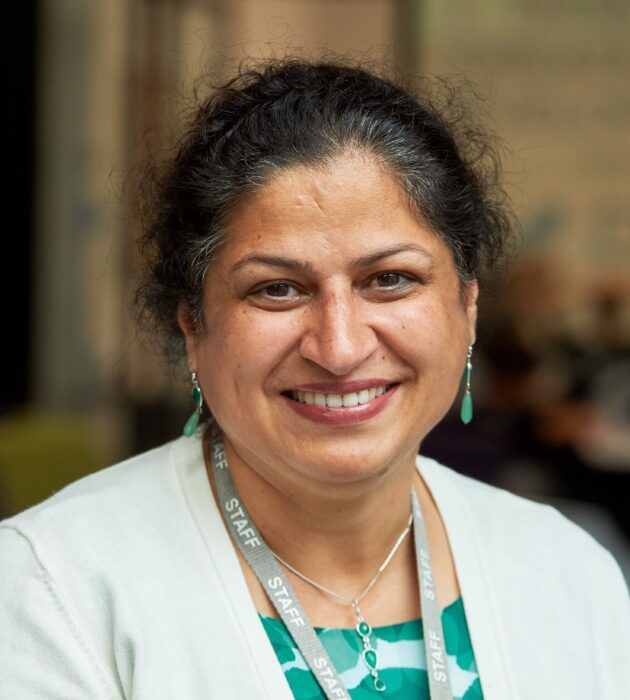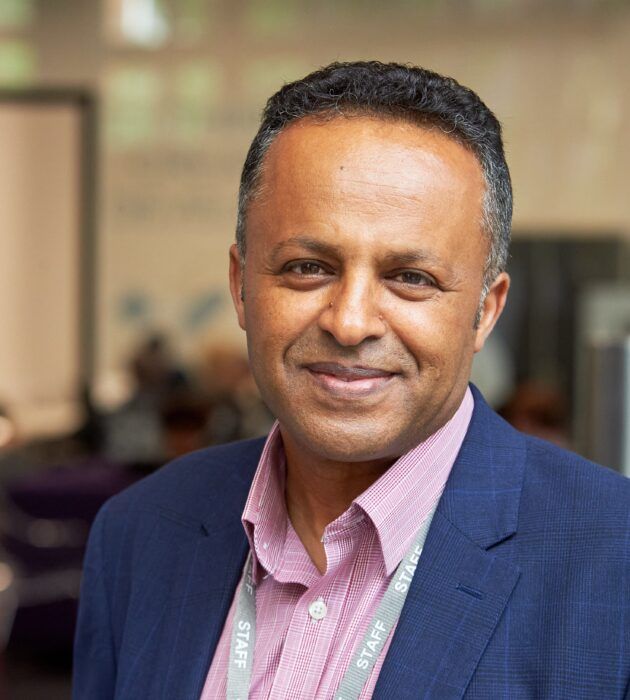Level 3 AAQs (Pearson)
Exam board: Pearson level 3 AAQs: Information Technology and Computing
Level 3 Alternative Academic Qualifications (AAQs), 360 GLH equivalent of 1 A-level
Why study this course?
Do you want to develop the skills and the technical know-how to change the digital industry? Computer Science is at the core of all our curriculum pathways, propelling you to where you want to be. It’s not exclusively about learning to code, or learning to create digital products, but rather about problem-solving, thinking laterally and becoming a successful lifelong learner.
Computer Science at Ada is a groundbreaking effort to change the way we educate young people to be job-ready for the future. This course will have 10 hours per week of timetabled Computer Science lessons.
The Computer Science curriculum actively incorporates the expertise of our digital industry partners alongside that of our experienced teaching team and ensures our programmes of study offer outstanding opportunities for learners to develop in-demand, industry-ready skills that allow them to make excellent progress in their chosen digital career.
The Pearson Level 3 Alternative Academic Qualification BTEC National in Information Technology (Extended Certificate) allows students to study the fundamental knowledge of Information Technology covering the role and implications of using Information Technology systems and cyber-security threats and how to manage attacks.
What will you learn?
Students will also develop important skills for creating websites to meet a specific purpose and to manage data through the development of a relational database solution. There are two examined units and two internally assessed units where students will engage in practical tasks to develop their Information Technology skills and knowledge.
The qualification has four mandatory units covering the following topics:
- Information Technology Systems – Information technology systems, including the relationship between software and hardware, and the issues related to IT systems
- Cyber Security and Incident Management – Types of cyber security attacks, the vulnerabilities in networked systems and how to plan and respond to attacks
- Website Development – The development tools, techniques and processes used in website development and how to test usability, functionality and fitness for purpose
- Relational Database Development – Structure of data, data design and database management systems (DBMS).
The skills you will learn:
- Problem Solving – The use of digital tools to analyse and solve problems
- Digital Collaboration and Communication – Using digital tools to communicate and share information with stakeholders
- Transacting Digitally – Using digital tools to set up accounts and pay for goods/services
- Digital Security – Identify threats and keep digital tools safe
- Handling Data Safely and Securely – Follow correct procedures when handling personal and organisational data
How will I be taught?
We lead with concepts – supporting learners in the acquisition of knowledge, through the use of key concepts, terms and vocabulary, providing opportunities to build a shared and consistent understanding;
We use project-based learning activities and direct industry engagement to provide learners with ample opportunity to apply and consolidate their knowledge and skills;
We provide activities with different levels of direction, scaffolding and support that promote active learning, ranging from highly structured to more exploratory tasks with the aim of encouraging greater learner independence;
How will I be assessed?
4 units of which 4 are mandatory and 2 are external. Mandatory content (100%). External assessment (66.6%).
Mandatory unites – students complete all units
| Unit number | Unit title | GLH | Type | How assessed |
|---|---|---|---|---|
| 1 | Information Technology Systems | 120 | Mandatory | External |
| 2 | Cyber Security and Incident Management | 120 | Mandatory | External |
| 3 | Website Development | 60 | Mandatory | Internal |
| 4 | Relational Database Development | 60 | Mandatory | Internal |
| Unit | Type | Availability |
|---|---|---|
| Unit 1: Information Technology Systems | – An external examination set and marked by Pearson – 90 marks | – January and May/June – First assessment May/June 2026 |
| Unit 2: Cyber Security and Incident Management | – An external examination set and marked by Pearson – 90 marks | – January and May/June – First assessment May/June 2026 |
Each external assessment for a BTEC National is linked to a specific unit. All of the units developed for external assessment are of 60, 90 or 120 GLH to allow students to demonstrate breadth and depth of achievement. Each assessment is taken under specified conditions, then marked by Pearson and a grade awarded. Students are permitted to resit the examination twice. This equates to three attempts in total: one inclusive of registration, the remaining two attempts as resits. If students resit an examined unit, the best grade achieved will count towards their overall qualification grade, not necessarily the most recent sitting. External assessments are available twice a year.
Units are assessed using a grading scale of Distinction (D), Merit (M), Pass (P), Near Pass (N) and Unclassified (U). The grade of Near Pass is used for externally assessed units only. All mandatory and optional units contribute proportionately to the overall qualification grade, for example a unit of 120 GLH will contribute double that of a 60 GLH unit. This qualifications is graded using a scale of P to D*.
Where will this take me?
This qualification can lead to progression to the following degrees:
- BA Business Studies
- BSc Information Systems
- BSc Computer Science
Key links:
Level 3 AAQs (OCR)
Exam board: Level 3 Alternative Academic Qualifications (AAQs), 360 GLH equivalent of 1 A-level
OCR Level 3 AAQs: Application Development
Why study this course?
The OCR Level 3 Alternative Academic Qualification Cambridge Advanced National in Computing: Application Development (Certificate) is for students aged 16-19 years old. It will develop knowledge, understanding and skills that will help prepare you for progression to undergraduate study when taken alongside other qualifications.
You will have the opportunity to apply what you learn to real-life contexts, such as:
- Interpreting client requirements and documenting ideas.
- Planning and designing UX/UI solutions.
- Communicating UX/UI solutions to clients.
What will you learn?
F160: Fundamentals of Application Development (exam)
F161: Developing Application Software (exam)
F162: Designing and Communicating UX/UI Solutions (NEA)
Optional (choose two): Website Development, Mobile App Development, Game Development, Software Development Project (NEA)
There are two windows each year to submit NEA outcomes and request a moderation visit by an OCR Assessor.
How will I be taught?
We lead with concepts – supporting learners in the acquisition of knowledge, through the use of key concepts, terms and vocabulary, providing opportunities to build a shared and consistent understanding;
We use project-based learning activities and direct industry engagement to provide learners with ample opportunity to apply and consolidate their knowledge and skills;
We provide activities with different levels of direction, scaffolding and support that promote active learning, ranging from highly structured to more exploratory tasks with the aim of encouraging greater learner independence;
How will I be assessed?
Students must complete five units: • two externally assessed units • three NEA units
Units F160 and F161 are assessed by an exam and marked by OCR. We will assess the NEA units and OCR will moderate them.
Where will this take me?
Those who want to develop applied knowledge and skills in application development and want to progress onto other related study, such as higher education courses in Computer Science, Computer Games Development, Computing, Creative Computing, Web and Mobile Development, Web and User Experience Design.
Key links:
A-level Computer Science (OCR)
Exam board: OCR A-level Computer Science H446
Why study this course?
The course enables learners to understand:
- An understanding of and ability to apply fundamental principles and concepts of computer science including; abstraction, decomposition, logic, algorithms, and data representation.
- the ability to solve problems using computational thinking skills.
- The ability to articulate the individual (moral), social (ethical), legal and cultural opportunities and risks of digital technology.
What will you learn?
- emphasis on problem solving using computers
- emphasis on computer programming and algorithms
- Emphasis on the mathematical skills used to express computational laws and processes, e.g. Boolean algebra/logic and comparison of the complexity of algorithms
- less emphasis on ICT.
How will I be taught?
- We lead with concepts – supporting learners in the acquisition of knowledge, through the use of key concepts, terms and vocabulary, providing opportunities to build a shared and consistent understanding;
- We encourage learner collaboration through paired programming and structured group tasks in order to stimulate classroom discussion, articulation of concepts and development of a shared understanding;
- We model processes and practices using techniques such as worked examples and live coding and believe modelling is particularly beneficial as a means of providing scaffolding
How will I be assessed?
[Discussion required about using graphic of table or creating live table]
Where will this take me?
Studying computer science equips you with technical skills, from programming languages to algorithm design, opening a range of career opportunities. You can study computer science at a university.
Key links:
https://www.ocr.org.uk/images/170844-specification-accredited-a-level-gce-computer-science-h446.pdf
T level Digital Software Development
Exam board: T Level Technical Qualification in Digital Software Development
(Level 3) – (1200 GLH equivalent to 3 A-Levels + 45 day placement)
Why study this course?
T levels are two-year, Level 3 study programmes that follow the study of GCSEs and Technical Awards and offer an alternative to A Levels and Apprenticeships. T levels combine classroom theory, practical learning and a minimum 315 hours of industry placement with an employer. The work placement ensures students have real experience of the workplace. T levels are developed in collaboration with employers so that the content meets the needs of industry and prepares students for work. T levels provide the knowledge and experience needed to progress to highly skilled employment, an apprenticeship or higher-level study, including university.
What will you learn?
Students learn about the following topics:
- Problem solving
- Introduction to programming
- Emerging issues
- Legislation and regulatory requirements
- Business context
- Data
- Digital environments
- Security.
The T level focuses on:
- Full-stack and agile software development
- Industry-aligned digital skills
- Real-world experience and professional readiness via placement
How will I be taught?
- We lead with concepts – supporting learners in the acquisition of knowledge, through the use of key concepts, terms and vocabulary, providing opportunities to build a shared and consistent understanding;
- We use project-based learning activities and direct industry engagement to provide learners with ample opportunity to apply and consolidate their knowledge and skills;
- We encourage learner collaboration through paired programming and structured group tasks in order to stimulate classroom discussion, articulation of concepts and development of a shared understanding;
How will I be assessed?
Year 12 Core Component – 600 GLH
| Assessment component | Assessment method | Duration | Marks | Weighting | Timetable | Availability |
|---|---|---|---|---|---|---|
| Core Paper 1 | Written examination | 2 hours 15 minutes | 90 | 30% | Set date/time | June/November |
| Core Paper 2 | Written examination | 2 hours 15 minutes | 90 | 30% | Set date/time | June/November |
| Employer Set Project | Externally set project | 14 hours 30 minutes | 100 | 40% | Set date/time | May/November |
Core Paper 1 = 30% of core (15% of total) – First attempt June 2026/ Second attempt Nov 2026
Core Paper 2 = 30% of core (15% of total) – First attempt June 2026/ Second attempt Nov 2026
Core ESP = 40% of core (20% of total) First attempt May 2026/ Second attempt Nov 2026
Core ESP Assessment overview:
There are five parts to the assessment:
- Task 1: Planning a project
- Task 2: Identifying and fixing defects in an existing code
- Task 3: Designing a solution
- Task 4a: Developing a solution
- Task 4b: Reflective evaluation.
Students will undertake the assessed elements of the project tasks under
supervised conditions.
Year 13 – Occupational Specialism, 600 GLH
Occupational Specialism = 50% of total
| Assessment component | Assessment method | Duration | Marks | Weighting | Timetable | Availability |
|---|---|---|---|---|---|---|
| Digital software development | Externally set project | 50 hours 30 minutes | 144 | 100% | Windowed | March to May |
Performance Outcomes: In this project students will:
PO1 – Analyse a problem to define requirements and acceptance criteria,
aligned to user needs
PO2 – Design, implement and test software
PO3 – Change, maintain and support software
PO4 – Create solutions in a social and collaborative environment
PO5 – Discover, evaluate and apply reliable sources of knowledge
PO6 – Apply ethical principles and manage risks in line with legal and regulatory
requirements when developing software
Note:
Core and Employer Set Project (ESP) components are graded A–E or Unclassified. The Occupational Specialism (OS) component is graded Pass, Merit, Distinction or Unclassified. The overall grading is on a scale of Pass, Merit, Distinction, Distinction or Unclassified. The overall grade is awarded by the Institute for Apprenticeships and Technical Education (IfATE).
Where will this take me?
Best suited to students already confident in programming and highly career-focused, this pathway offers a vocational, project-led route into degree apprenticeships or direct roles in software engineering, DevOps, and digital systems development.
This Technical Qualification aligns to the Level 3 Apprenticeship for Software Development Technicians. The qualification therefore supports progression to entry-level job opportunities in software development.
Job roles could include:
- Software Development Technician
- Junior Developer
- Junior Web Developer
- Junior Application Developer
- Junior Mobile App Developer
- Junior Games Developer
- Junior Software Developer
- Junior Application Support Analyst
- Junior Programmer
- Assistant Programmer
- Automated Test Developer.
Key links:
https://qualifications.pearson.com/en/qualifications/t-levels/digital-software-development.html
Something to watch:
https://www.youtube.com/watch?v=-nNNczEW-QM





